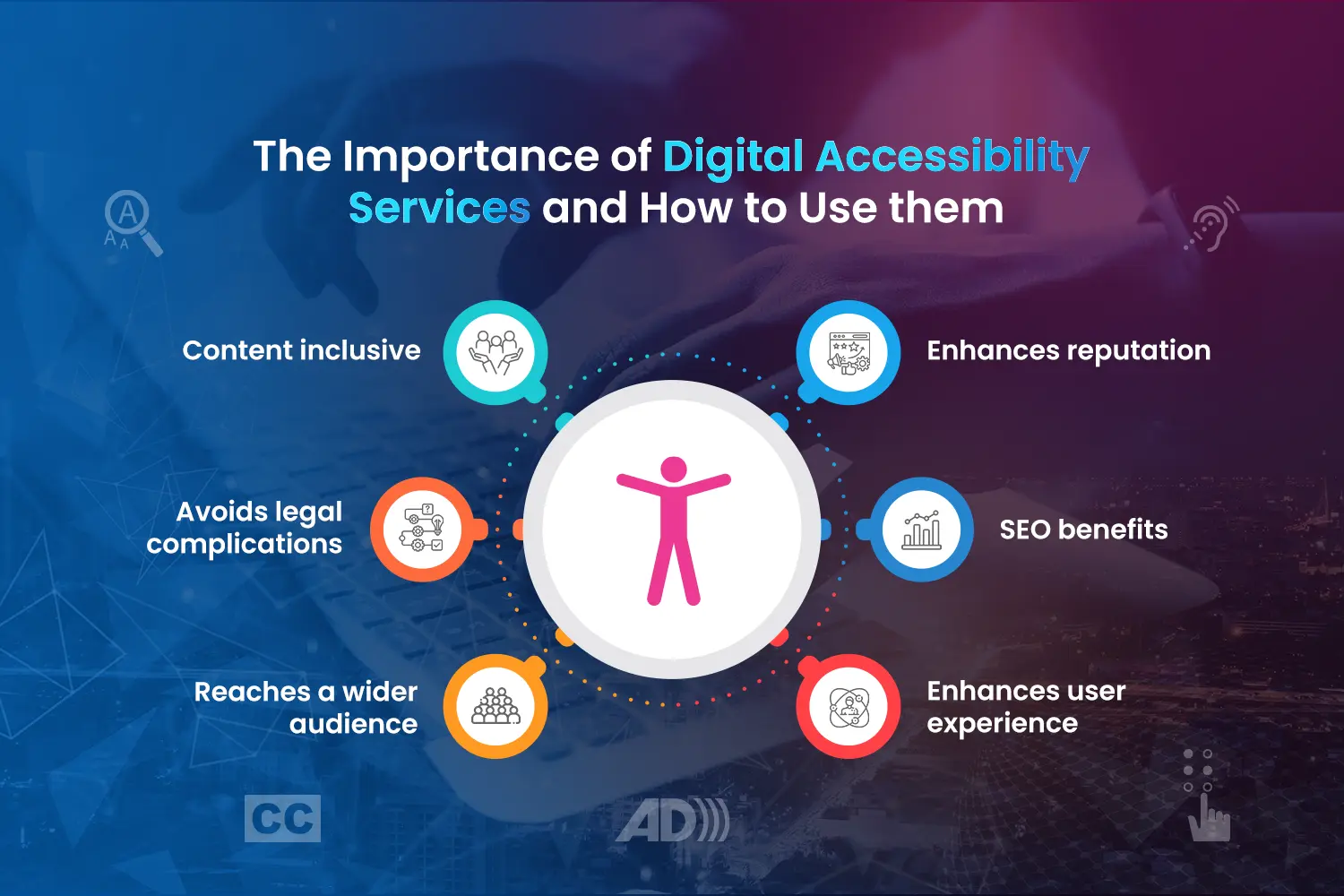
The Importance of Digital Accessibility Services and How to Use them
Explore ways to make your application or website accessible to everyone with digital accessibility services.
Digital accessibility refers to the creation of digital content that is accessible to everyone, regardless of age or disability. According to a study conducted by the WHO, 15% of the world’s population suffers from different sorts of disabilities.
Digital accessibility makes the content inclusive, avoids legal complications, reaches a wider audience, enhances reputation, has SEO benefits, and enhances the user experience.
The article aims to share the significance, key elements, and how businesses can leverage digital accessibility with the help of web or digital accessibility services.
Why do digital accessibility services matter?
● People who are not able to access media platforms through digital accessibility can now access the content. Inclusivity fosters trust, widens the audience, and increases brand reputation. Countries like America have made it a law for companies to create content that is accessible to the disabled, according to the ADA/508 (Americans with Disabilities Act)
● Digital accessibility services not only make the content accessible to the disabled but also make it easily accessible by everyone, enhancing the overall user experience
● Imagine a visually challenged person accessing a website and struggling to extract content from the internet. That’s where digital accessibility services come in handy. Read aloud is one of the digital accessibility techniques that reads the content on the internet aloud, making it accessible to them.
Key Elements of Digital Content Accessibility Services
● Every digital piece of content should comply with the international standards set by WCAG (Web Content Accessibility Guidelines). Perceivable, operable, understandable, and robust are four standards set forth by WCAG regarding digital accessibility. WCAG falls under web content accessibility services.
Visual accessibility
● There should be a difference in the background and foreground colors (color contrasts) for people with low vision to access the website. The standard ratio is 4:5:1 (text, link, and lines), making the website visually accessible.
Auditory accessibility
● As the name suggests, the content of the web should be accessible to the auditorily challenged and to people from across the world. You can achieve it by adding captions or subtitles to videos.
Motor accessibility
● Motor accessibility refers to people who struggle to walk (especially people in wheelchairs). It can be achieved by integrating features like keyboard navigation, focus indicators, and large click targets, which will let them navigate the site with ease
● For example, the tab key is used to navigate options, and an option is selected with the enter or space key, and the site should be compatible with the screen reader.
Cognitive accessibility
● Cognitive accessibility refers to curating content for people with cognitive disabilities (relating to the brain). According to the WCAG standards, every digital piece of content should be clear and concise, have structural content (with proper headings and sub-headings), and have alternative text (alt text).
How Businesses Can Leverage Digital Media Accessibility
Businesses can leverage digital media accessibility services in the following ways:
Accessibility audit services
● It is one of the most efficient ways for businesses to leverage digital accessibility. It refers to the process of running various checks on the website to see how accessible it is to people with disabilities. The tests will be run according to the WCAG (Web Content Accessibility Guidelines) and ADA (Americans with Disabilities Act) guidelines and standards. The process usually involves preparation, evaluation, documentation, remediation, validation, and regular monitoring.
Accessibility statement
● An accessibility statement is a formal written document that states the company’s compliance with the WCAG and ADA standards and guidelines. It contains the company’s approach to accessibility and steps taken to achieve the required standards
● The statement typically contains accessibility policy, scope, accessibility features, testing, challenges, feedback, resources, assistance, feedback, resources, statement date, revision history, and conformance
● The accessibility of a website is determined by the three levels set by WCAG: A, AA, and AAA. A refers to the lowest score, AA refers to the mid-level, and AAA refers to the highest level of conformance.
Accessibility training
● Accessibility training refers to educational programs or workshops that teach content creators, developers, and designers the best accessibility techniques to make digital content digitally accessible
● The training should seamlessly teach individuals accessibility standards, guidance, design principles, development techniques, testing, evaluation, UX considerations, legal requirements, case studies, and continuous learning
● Accessibility testing tools such as Google Lighthouse, WAVE (Web Accessibility Evaluation Tool), Accessibility Viewer, Site improve, Axe-cli, and Sore Site can be used to evaluate web accessibility.
In short
Digital accessibility service is paramount to creating an inclusive web page that can be accessed by everyone. Every company must embrace digital accessibility while creating digital content to enhance the user experience, avoid legal consequences, and reap SEO benefits.